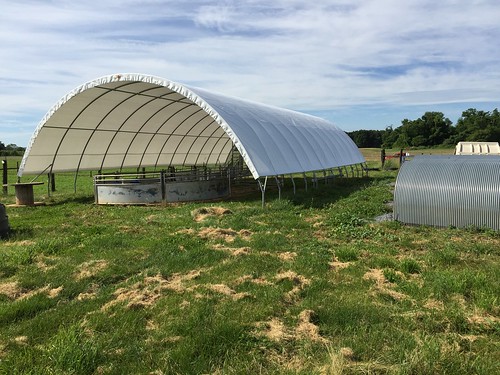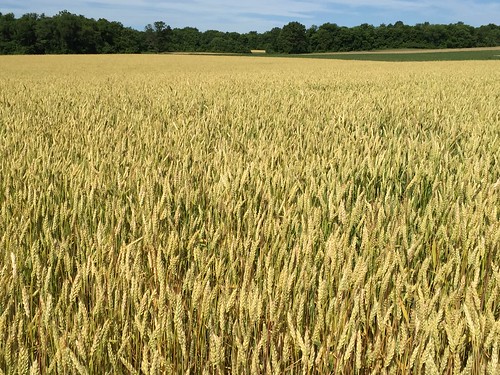The goal is for the goats to start the test by grazing the five acres of warm seasonal annual grasses and legumes. This year's annual pasture is a mix of BMR pearl millet, Sunn Hemp, cow peas, and brassicas. It was planted almost two weeks ago. There is plenty of moisture to support its fast growth.
This year, the bucks will be supplemented with whole barley (grain). The barley will be gradually introduced to their diet and increased slowly until it reaches a maximum of 1 lb. per head per day. As compared to last year's supplementation with soy hull pellets, barley is a more economical source of energy and far less likely to cause choking among the goats. There is also less likely to be feed wastage, as the soy hull pellets were quite powdery. The barley will be harvested near to the time when the buck test will begin. Barley is grown on the research farm.
Analyses of fecal matter by the Grazingland Animal Nutrition Lab in Texas has shown the test goats' diet to be deficient in energy; thus, the need for energy supplementation. Supplementation also appears to help with parasite resilience, as last year's fecal egg counts were the highest ever, yet few goats showed signs of clinical parasitism (FAMACHA© scores 4, 5).
The contest goats will be penned in a 16 x 16 foot zero-grazing pen with a three-sided shelter. Hay will be fed in four-foot combination hay racks. Grain (whole barley) will be fed once per day in poly troughs that will be hung on side of pen (and removed after feeding). The pen and feeders were cleaned and are ready for arrival of the 16 contest goats.















